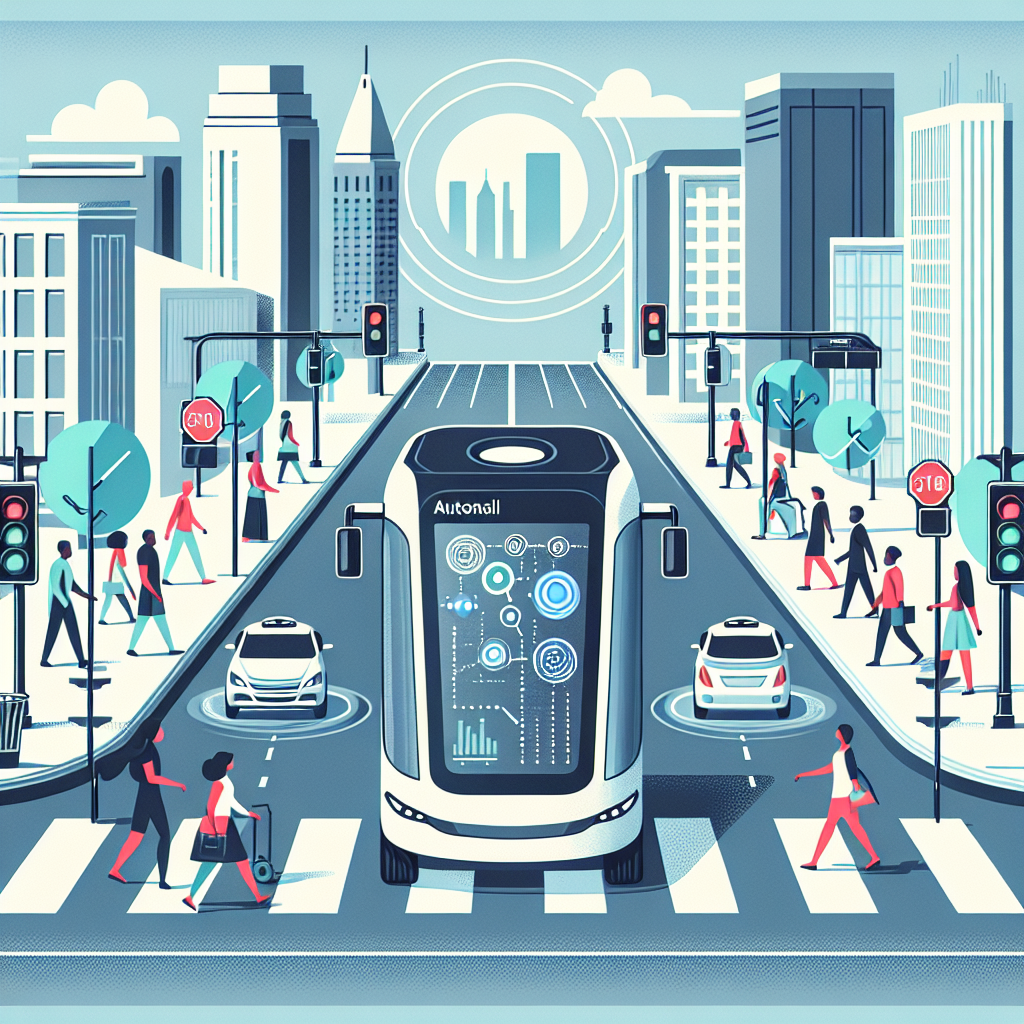Artificial Intelligence (AI) has been revolutionizing various industries, and transportation is no exception. One of the most exciting applications of AI in transportation is its use in autonomous shuttle services. Autonomous shuttles are self-driving vehicles that can transport passengers without the need for a human driver. These shuttles are equipped with sensors, cameras, and other technologies that allow them to navigate and operate safely on the roads.
The use of AI in autonomous shuttle services has the potential to transform the way people travel in cities and communities. This technology has the potential to improve the efficiency and safety of transportation systems, reduce traffic congestion, and provide more accessible and affordable transportation options for people. In this article, we will explore the use of AI in autonomous shuttle services in transportation and discuss its benefits and challenges.
Benefits of AI in Autonomous Shuttle Services
1. Safety: One of the primary benefits of using AI in autonomous shuttle services is improved safety. AI technologies can help autonomous shuttles navigate through traffic, avoid accidents, and respond to unexpected situations on the road. By removing human error from the equation, autonomous shuttles have the potential to reduce the number of accidents and fatalities on the roads.
2. Efficiency: Autonomous shuttle services can also improve the efficiency of transportation systems. These shuttles can be programmed to follow optimal routes, pick up passengers efficiently, and reduce travel times. By using AI to coordinate and manage autonomous shuttle services, transportation providers can optimize their operations and provide better service to passengers.
3. Accessibility: Autonomous shuttle services have the potential to make transportation more accessible to a wider range of people. These shuttles can be deployed in underserved areas, providing convenient and affordable transportation options to people who may not have access to traditional public transportation. Autonomous shuttles can also be designed to accommodate passengers with disabilities, making transportation more inclusive for everyone.
Challenges of AI in Autonomous Shuttle Services
While the potential benefits of using AI in autonomous shuttle services are significant, there are also challenges that need to be addressed. Some of the key challenges include:
1. Technology limitations: AI technologies are still evolving, and there are limitations to what autonomous shuttles can currently do. For example, autonomous shuttles may struggle to navigate in certain weather conditions, such as heavy rain or snow. Developers are working to overcome these limitations, but it will take time for AI technologies to reach their full potential.
2. Regulatory concerns: The deployment of autonomous shuttle services raises regulatory concerns related to safety, liability, and privacy. Governments and transportation authorities need to establish clear guidelines and regulations for the operation of autonomous shuttles to ensure the safety of passengers and other road users. Addressing these regulatory concerns will be crucial for the widespread adoption of autonomous shuttle services.
3. Public acceptance: Autonomous shuttle services are still a relatively new technology, and public acceptance is a key challenge. Some people may be hesitant to ride in autonomous shuttles due to concerns about safety or privacy. Transportation providers need to educate the public about the benefits of autonomous shuttle services and address any concerns to increase acceptance and adoption.
FAQs about AI in Autonomous Shuttle Services
Q: How do autonomous shuttles navigate without a human driver?
A: Autonomous shuttles use a combination of sensors, cameras, and AI algorithms to navigate safely on the roads. These technologies allow the shuttles to detect obstacles, follow traffic rules, and make decisions in real-time to ensure safe and efficient operation.
Q: Are autonomous shuttles safe?
A: Autonomous shuttle services are designed to prioritize safety, and developers are continuously improving the technology to enhance safety features. While accidents involving autonomous shuttles have occurred, they are generally rare compared to traditional vehicles. Autonomous shuttles undergo rigorous testing and certification processes to ensure their safety on the roads.
Q: How can I book a ride on an autonomous shuttle?
A: Transportation providers typically offer autonomous shuttle services through mobile apps or online platforms. Users can book a ride, track the shuttle’s location, and receive updates on their journey through these platforms. Some autonomous shuttle services may also have designated pick-up and drop-off locations for passengers.
Q: What are the costs associated with using autonomous shuttle services?
A: The cost of using autonomous shuttle services can vary depending on the transportation provider and the specific service. Some providers offer autonomous shuttle services as part of a subscription or membership program, while others may charge a fare for each ride. Transportation providers may also offer discounts or promotions to encourage the use of autonomous shuttle services.
Q: How do autonomous shuttles communicate with other vehicles on the road?
A: Autonomous shuttles use vehicle-to-vehicle (V2V) communication technologies to communicate with other vehicles on the road. These technologies allow autonomous shuttles to exchange information with other vehicles, such as speed, direction, and location, to improve safety and coordination on the roads.
In conclusion, the use of AI in autonomous shuttle services has the potential to revolutionize transportation systems and improve the way people travel in cities and communities. By leveraging AI technologies, autonomous shuttles can enhance safety, efficiency, and accessibility in transportation. While there are challenges that need to be addressed, the benefits of autonomous shuttle services are significant, and they have the potential to transform the future of transportation. As AI technologies continue to advance, autonomous shuttle services will play an increasingly important role in shaping the way we move and commute in our cities.

